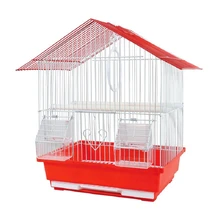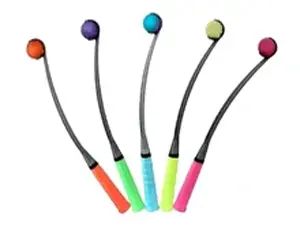en
Raising birds as a way for urban people to reduce stress and achieve healing is infiltrating modern households at an annual growth rate of 12%. A 2023 survey conducted by the China Association of Ornamental Birds shows that 84% of bird owners view birdcages as "bird living space systems," and the rationality of their design directly affects bird lifespan and behavioral health. The scientific selection of cages needs to integrate animal behavior science, materials engineering, and ecological aesthetics, reconstructing natural survival elements for birds within a limited space.

The materials for birdcages are varied, commonly including bamboo, wood, and metal. Among them, metal birdcages have significant advantages in many aspects: Metal birdcages are generally sturdier than those made of wood or plastic, able to withstand birds' pecking and climbing pressures, and not easily damaged; they undergo anti-rust treatments, such as galvanization or use of stainless steel, to offer strong corrosion resistance suitable for long-term use; they generally have stable structures, not prone to tipping over or deforming, providing a safe living environment; they can endure high temperatures and can be sanitized using hot water or steam, ensuring cage hygiene; they come in various sizes and shapes to accommodate different types and sizes of birds; they usually feature modern designs, with simple and elegant appearances that can integrate well into various home environments.
The structural design of a birdcage directly affects the living experience of the bird. Birds naturally love to fly and move, so the cage should be large enough for the bird to fly freely inside. An excellent birdcage should have ample activity space, reasonable perch layout, and safety measures. The perches should be of appropriate thickness and evenly distributed. Too thin perches will make birds unstable when standing, while too thick perches will make birds uncomfortable. Generally, the perch diameter should be slightly larger than the bird's claws, allowing the bird to grasp firmly; safety measures such as anti-escape nets and anti-peck hooks should be installed to ensure the bird's safety.
A birdcage should be not only practical but also beautiful. An elegantly designed birdcage can enhance the home's style and make the bird more joyful inside. When choosing a birdcage, we can select uniquely designed and exquisitely crafted ones according to our preferences and the bird's characteristics. Also, consider the practicality of the birdcage, such as being easy to clean and convenient for feeding, ensuring the bird lives comfortably and securely.
The size of the birdcage should be chosen based on the size and type of the bird. Large birds require more activity space, so select large-sized birdcages; small birds are better suited to small and delicate cages. Additionally, consider the compatibility of the birdcage with the home environment, ensuring the cage meets the bird’s needs while harmonizing with the home style.
The scientific configuration of a birdcage essentially involves the deconstruction and reorganization of the functional elements of a bird’s natural habitat. When the cage space can meet 32 core behavioral needs such as grooming, foraging, and socializing, according to monitoring by the University of Cambridge Animal Welfare Research Center, bird feather glossiness increases by 27%, and singing frequency increases by 40%. Bird-raising methods based on the concept of animal welfare not only extend the average lifespan of ornamental birds (from 8 years with conventional care to 12 years) but also establish cross-species emotional feedback mechanisms through daily care behaviors such as cleaning and feeding, making the crisp bird calls the most dynamic rhythm in urban life.
This is the last one.


